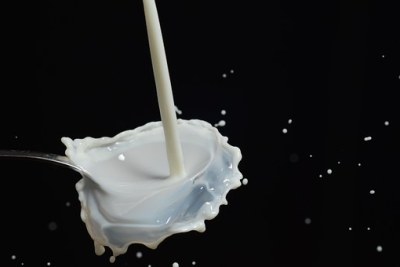-
Africa: An Indigenous Grass Could Transform the Continent's Dairy Yields. Here's How
The Conversation Africa, 27 September 2021
The cows kept by small-scale farmers in Africa are notoriously unproductive. The average dairy cow, for example, produces about 540 litres of milk per lactation. By contrast, dairy… Read more »
-
Namibia: 1 500 Dairy Industry Jobs Under Threat
Namibian, 16 September 2021
NAMIBIA'S dairy industry is fighting for survival in the face of decreasing production volumes and a high-cost regime pushing producers out of the sector. Read more »
-
Eritrea: Ft Dairy Products and Promising Prospects
Shabait, 14 July 2021
At a farm in Daeropaulos, Central Region, Mrs. Freweini is using her over 27 years' worth of knowledge to empower young girls. The going has not always been easy, yet she has built… Read more »
-
Zimbabwe: Dairy Farmers' Leader Speaks On Milk Shortages
Zimbabwe Standard, 30 May 2021
Reports of milk shortages surfaced last month, with Zimbabwe Association of Dairy Farmers (ZADF) chairperson Kudzai Chirima telling Standardbusiness that the country could be… Read more »
-
Zimbabwe: Milk Shortages Hit Zimbabwe
Zimbabwe Standard, 11 April 2021
Zimbabwe has been hit by a serious milk shortage, with dairy farmers citing viability challenges emanating from poor producer prices, it has emerged. Read more »
How a Grass Found In Africa Could Transform Cow Milk Industry
Cows kept by small-scale farmers in Africa are notoriously unproductive. The average dairy cow, for example, produces about 540 litres of milk per lactation. By contrast, dairy cows in North America that belong to commercial or intensive farmers can produce up to 10,479 litres of milk per lactation.
One of the main differences between the two animals, lies in the quality of their feeds and forage. Simply put, the more nutritious cows' diets are, the more and better quality milk they produce. And small-scale farmers - of which there are about 33 million in Africa, contributing up to 70% of the continent's food supply - usually cannot afford more nutritious feed.
Brachiaria - the genus name of Urochloa - consists of about 100 documented species of grass of which seven species used as fodder plants are of African origin. This grass may hold the key to improving milk yields from cows kept by small-scale farmers as it will help to meet rising demand for animal-sourced foods - like cow's milk - as the continent becomes more urbanised and its population grows, writes Sita Ghimire for The Conversation.
InFocus
-
Uganda has asked Kenya and Tanzania to remove prohibitive levies placed on its dairy products saying it could jeopardise trade relations and the East African Community spirit. ... Read more »
-
Nigeria spends U.S.$1,5 billion annually to import milk. Various initiatives have been implemented to look at ways of cutting the spend by government. The Centre for Nigerian Dutch ... Read more »
-
There has emerged a tussle between Kenya and Uganda governments after Kenyan officials reportedly impounded dairy products imported from neighboring Uganda. The escalating trade ... Read more »

Cattle grazing on Brachiaria grass at the International Livestock Research Institute campus in Nairobi (file photo).



